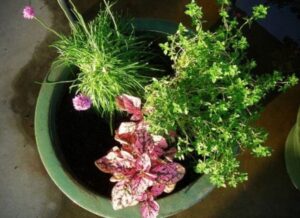3 Radical Ways to Grow Veggies Indoors

There’s no getting around it, fellow urban dwellers. It’s straight up difficult for us to grow our own food. Lack of space, soil, sunlight and fresh air make it a pure challenge to successfully garden—these are the very elements that plants need to thrive! But thanks to the ingenuity of today’s green engineers, we’re getting new technologies every day that help us get one step closer to becoming urban farmers and gardeners. Here are three radical ways to grow veggies indoors; no patio or yard required.

Windowfarms
Windowfarms is the brainchild of NYC-based Tomorrow Lab, a forward-thinking product development group. Featured on NPR, The New York Times, Grist and numerous other media outlets, Windowfarms are perhaps the most appealing and user-friendly way to grow food indoors for the modern urbanist. In short, the Windowfarm is a vertical hydroponic system. The system is constructed of one, two or four columns of plants that hang vertically from any type of window in your home. Planted in recycled water bottles, the system circulates nutrient-spiked water through a small tubing system that runs from the bottom reservoir and through each plant hanging in the columns. Nutrients that aren’t directly absorbed by the plants come back down to the reservoir and are recirculated again.
At four-feet tall, the Windowfarms can hang from tall sliding door windows, alongside a windowsill or even off of shelves next to windows. You can build your own Windowfarm using their online tutorials and with basic equipment at a setup cost of just $175, or you can purchase a pre-made Windowfarm online ranging from $119.95 to $349.95 (depending on how many columns you want).
Parasite Farm
A research project of Nils Ferber in collaboration with Charlotte Dieckmann gave us the Parasite Farm, a German-created indoor compost system. Its aesthetic screams Ikea efficiency and minimalism, and it operates like a miniature garden in different parts of your home. There’s a compost bin that can hang off of a countertop or table; it looks more like a kindergartener’s crayon box than an actual scrap bucket. Best of all, it’s topped with a sliding cutting board so you can scoot your kitchen scraps directly into the bin.
Small matching planter boxes are designed to fit snugly into bookshelves. You won’t even need hanging space for these plants to grow. Miniature lights also fit into bookshelving units, one light placed directly over each planter box. The construction is lovely, really—your apartment space becomes a speckled mélange of these bright green plant and composting bins that blend right in with your books, tables and wall art.
AeroGarden
The AeroGarden has more mass market appeal; it looks like it would be on an “As Seen on TV” infomercial. This dirt-free indoor garden planter is made to fit a tabletop in your home—place it on a kitchen counter and let those veggies grow. Using a type of hydroponics the company calls “aeroponics,” plants grow in this pod while being both slightly exposed to air and slightly submerged in the nutrient solution. This method of growing is said to encourage faster and fuller growth of your foods in the system.
The AeroGardens have built-in lights and a “Smart Garden” alert button to tell you when your plants need more nutrients or water. There are a number of models available, depending on how much food you want to grow and how much tabletop space you have. Food kits include vegetables, salad greens, herbs or flowers. The nutrients that come with the kit are not organic, consumers should note. The company does say, however, that their mineral salt-based nutrient base has been proven to be “more nutritious than store-bought organically-grown produce.”
Image adapted from peregrine blue, Flickr, Creative Commons 2.0

